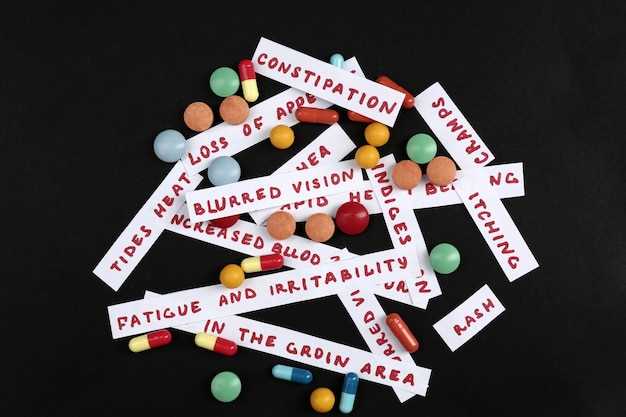
Are you looking for information about mirtazapine and amphetamines? Mirtazapine is not an amphetamine, it is a tetracyclic antidepressant that is commonly used to treat depression and anxiety disorders. Unlike amphetamines, mirtazapine works by increasing the levels of certain neurotransmitters in the brain, such as serotonin and norepinephrine.
What sets mirtazapine apart?
Mirtazapine does not have the same stimulant effects as amphetamines and is not typically associated with feelings of euphoria or increased energy. If you have any concerns about mirtazapine or other medications, it is important to consult with your healthcare provider.
Overview of Mirtazapine
Mirtazapine is a widely-used antidepressant medication that belongs to the class of tetracyclic antidepressants. It is commonly prescribed to treat major depressive disorder, generalized anxiety disorder, and other psychiatric conditions.
Mechanism of Action

Mirtazapine works by increasing the levels of neurotransmitters such as serotonin and norepinephrine in the brain. It blocks specific receptors (alpha-2 adrenergic receptors) which result in the release of more neurotransmitters. This mechanism helps to alleviate symptoms of depression and anxiety.
Additionally, mirtazapine has histamine-blocking properties, which may contribute to its sedating effect and the improvement of sleep in patients with insomnia.
Mechanism of Action

Mirtazapine, a noradrenergic and specific serotonergic antidepressant (NaSSA), works by enhancing the neurotransmission of norepinephrine and serotonin in the brain. It blocks certain subtype receptors (alpha-2 adrenergic autoreceptors and heteroreceptors) leading to an increase in the release of norepinephrine and serotonin, which helps alleviate symptoms of depression.
This unique mechanism of action differentiates mirtazapine from other antidepressants, making it a valuable option for patients who do not respond well to traditional SSRIs or SNRIs. By modulating the levels of these neurotransmitters, mirtazapine can improve mood, reduce anxiety, and promote a sense of well-being in individuals with depressive disorders.
Uses in Psychiatry
Mirtazapine is commonly prescribed in psychiatry for the treatment of major depressive disorder. It is known to be effective in managing symptoms of depression such as persistent sadness, loss of interest in activities, changes in sleep and appetite, and feelings of worthlessness. Additionally, mirtazapine is sometimes used off-label to treat anxiety disorders, post-traumatic stress disorder (PTSD), and insomnia.
One of the key advantages of mirtazapine in psychiatric practice is its relatively rapid onset of action compared to some other antidepressants. It may help improve mood and reduce anxiety symptoms within the first few weeks of treatment, making it a valuable option for patients in acute distress.
Side Effects and Safety
Mirtazapine is generally well tolerated, but like any medication, it can have side effects. Common side effects of mirtazapine include drowsiness, weight gain, increased appetite, dry mouth, and dizziness. These side effects are usually mild and tend to improve over time as your body adjusts to the medication.
Serious side effects:
In rare cases, mirtazapine can cause more serious side effects such as allergic reactions, serotonin syndrome, and changes in blood pressure. If you experience any of the following serious side effects, contact your healthcare provider immediately:
Allergic reactions: Symptoms may include rash, itching, swelling, severe dizziness, or trouble breathing.
Serotonin syndrome: This is a potentially life-threatening condition that can occur when mirtazapine is taken with other medications that affect serotonin levels. Symptoms include confusion, hallucinations, fever, fast heart rate, sweating, shivering, shaking, muscle stiffness, and loss of coordination.
Changes in blood pressure: Mirtazapine can cause a drop in blood pressure, leading to dizziness and fainting. This is more common in the elderly or those taking medications that also lower blood pressure.
It’s important to discuss any side effects you experience with your doctor to determine the best course of action. Overall, mirtazapine is considered a safe and effective medication for the treatment of depression and other psychiatric conditions.
Comparison with Amphetamine
Mirtazapine and amphetamine are both psychoactive substances, but they have different pharmacological profiles and uses.
Mirtazapine
Mirtazapine is a tetracyclic antidepressant that is commonly used to treat major depressive disorder. It works by increasing the levels of neurotransmitters like serotonin and norepinephrine in the brain, which can help improve mood and reduce symptoms of depression.
Amphetamine
Amphetamine, on the other hand, is a stimulant drug that is often used to treat conditions like ADHD and narcolepsy. It works by increasing the levels of dopamine and norepinephrine in the brain, which can improve focus, attention, and alertness.
| Characteristic | Mirtazapine | Amphetamine |
|---|---|---|
| Primary Use | Treating depression | ADHD and narcolepsy treatment |
| Mechanism of Action | Increasing serotonin and norepinephrine levels | Increasing dopamine and norepinephrine levels |
| Side Effects | Sedation, weight gain, dry mouth | Insomnia, weight loss, increased heart rate |
| Addictive Potential | Limited potential for abuse | High potential for abuse and dependence |
In conclusion, mirtazapine and amphetamine are distinct medications with different mechanisms of action and uses. It is important to consult a healthcare professional before using either substance to ensure the appropriate treatment for individual needs.
